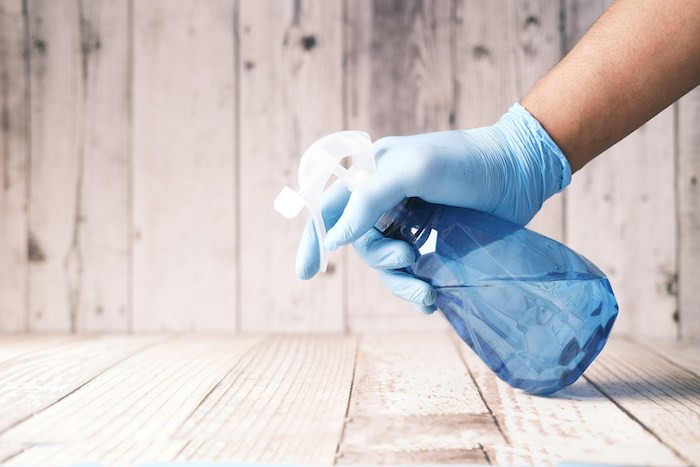Mold is a common issue for many homeowners. It is an opportunistic organism that thrives in damp and inadequately ventilated areas. Mold can cause major damage to homes and structures, and also poses a dangerous health risk to those who are continually exposed to mold spores and mycotoxins. These risks are heightened for those with certain genes, like the HLA-DR gene, and those already suffering from respiratory issues, allergies, asthma, or other health conditions.
There are many ways of dealing with mold. Some can be extensive and costly, requiring a professional to safely and effectively tackle, while other avenues can be very inexpensive and effective. The right method will need to be determined by assessing the extent of the mold issue, as well as the surfaces it is growing on. One potentially budget-friendly route for dealing with mold, is using hydrogen peroxide.
The Benefits of Hydrogen Peroxide
Hydrogen peroxide is a compound of water with an additional oxygen molecule. This extra oxygen atom is what allows for its substantial oxidizing power, which is what makes it such a powerful cleaner and disinfectant.
Hydrogen peroxide can be a great product for effectively cleaning mold on surfaces. It has disinfecting properties that can break down viruses, bacteria, and fungus… basically breaking the microorganisms down on a cellular level and killing them by degrading the cellular membrane. This makes hydrogen peroxide an excellent option for mold remediation. Unlike bleach, hydrogen peroxide penetrates semi-porous surfaces to kill the mold. While breaking down the mold, the hydrogen peroxide lifts particles to the surface, essentially uprooting the mold.
How to Clean Mold with Hydrogen Peroxide
Before you begin, make sure you have the proper safety gear and supplies needed- such as gloves, goggles, and a mask, to protect yourself from mold spores and hydrogen peroxide. Also, test out a small, inconspicuous area first to make sure the hydrogen peroxide will not damage your surface
To clean mold on surfaces with hydrogen peroxide, here are some basic guidelines:
- You will need to choose which concentration of hydrogen peroxide you want to use. Most stores will carry 3% concentration, but you can purchase a stronger concentration if you want to. Ideally use 3-6% for general cleaning. Using a stronger concentration would require more safety precautions for handling.
- First, it is important to maintain good ventilation while cleaning mold and using hydrogen peroxide. Open a window or door to bring in fresh air as you work. Wear a mask, gloves, and eye protection to shield your skin, eyes, and lungs from mold spores and from the hydrogen peroxide.
- You will need a spray bottle to use the hydrogen peroxide. Pour it into a spray bottle and do not dilute it.
- Completely saturate the moldy surface you wish to clean by spraying your concentration with the spray bottle. Let this sit for about 10-15 minutes to allow the hydrogen to thoroughly kill the mold. If needed, scrub the surface with a brush or sponge (while wearing protective gloves).
- Next, rinse and wipe the surface clean. You may need to repeat this several times until all the mold is wiped clean and the surface has no remaining residue.
- Dry the area thoroughly. This is important to prevent more mold growth. Ventilation and fans can speed up the drying process.
- When you are done, dispose of any moldy items or items that came in contact with mold carefully, by sealing them in a plastic bag. Make sure to discard your mask, gloves, etc, in the same way.
Safety Precautions with Hydrogen Peroxide
While hydrogen peroxide is considered nontoxic, you don’t want to directly touch it with bare skin, or get it near your eyes. It can also damage some surfaces, so it is a good idea to test a small area that is less visible before proceeding with cleaning the entire surface with it.
Other Benefits to Cleaning Mold with Hydrogen Peroxide
- It is nontoxic, unlike bleach and other common cleaning agents.
- It is inexpensive.
- It also kills bacteria.
- It can penetrate semi-porous surfaces.
Hydrogen peroxide is a relatively safe, effective, and inexpensive way to clean mold. By following the proper steps, you can use it as a cleaning agent to remove mold growth in your home and protect your health. Make sure you take care of any moisture or ventilation issues to prevent the mold from returning. Also, contact a professional mold remediator if the mold issue is too extensive. With proper treatment and maintenance, you can keep your home mold-free and healthy.

